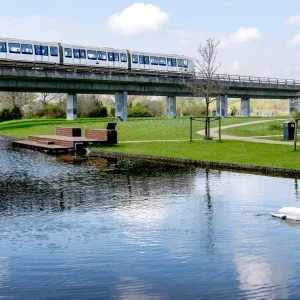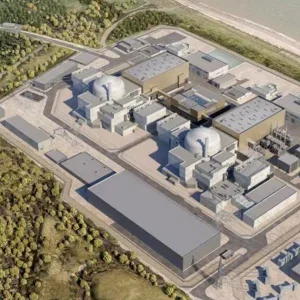While tunnellers note their major recent contribution to CERN’s Large Hadron Collider (LHC) project that went live this month, the hunt for ‘Big Bang’ knowledge already has another, bigger excavation project in the pipeline – the International Linear Collider (ILC).
Last year, plans announced for ILC called for approximately 72km of new tunnels, including: twin 31km long, 4.5m diameter parallel tubes; a 7km long circular bore, 5m in diameter, between the main tubes; and, 13 access major shafts.
Three possible sites are: the CERN lab near Geneva, Switzerland; Japan; and the Fermi lab near Chicago. Geology at those ‘deep’ candidate sites is different – dolomite in the US, granite in Japan, and sedimentary rock/sandstone in Europe. However, a shallow site option exists for Germany or Russia (T&TI, February 2007, p12).
If sited at CERN, the ILC complex will add to an already massive underground complex, even before the major cavern works for the LHC research.
In Switzerland, the LHC excavations were an extension of the initial, 26.7km long by 3.8m diameter ‘beam ring’ and cavern complex built in the 1980s for the Large Electron Positron (LEP) machine. The ring was bored in molasse at depths of 45m-170m.
The main recent excavations for LHC focused on opposite sides of the ‘ring’ for the Atlas and CMS experimental zones, and began in earnest in 2000. The main excavations and associated tunnels were completed by 2003-4, and mainly employed NATM but also TBM methods.
The finished size of the principal (UX15) Atlas cavern is 30m wide by 35m high by 53m long, having been opened to 35.1m by 42.3m by 56.1m – therefore being one of the largest weak rock caverns. A second (USA15) cavern is 20m wide and was excavated to 23m. The finished CMS caverns are 26m wide by 53m long, and 18m wide by 85m long, respectively, and separated by 7m.
A procurement shift for LHC saw CERN split the packages on a geographical basis compared to the earlier approach, which caused friction during LEP construction, of keeping surface and underground works apart. As such, for LHC works the Atlas and CMS zones were handled as separate design and then construction packages.







